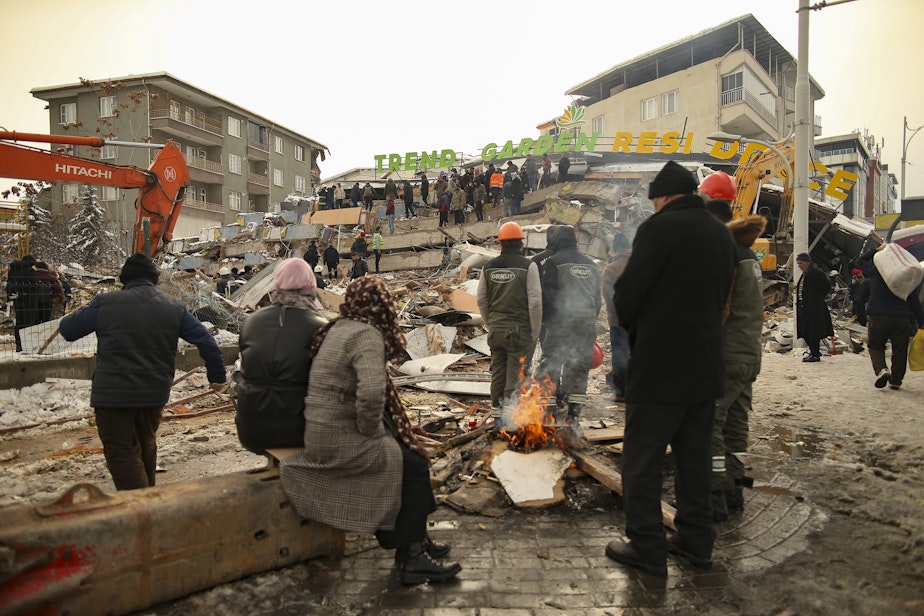Turkey's fault line is similar to faults under Puget Sound

Over 7,000 people are dead after a magnitude 7.8 earthquake shook southern Turkey, near the Turkish-Syrian border.
Harold Tobin, a researcher at the University of Washington and director of the Pacific Northwest Seismic Network, says the fault line that caused this disaster is similar to the faults under Puget Sound. The Seattle Fault, the Tacoma Fault, and the South Whidbey Island Fault are all shallow in the earth’s crust and are near large population centers, according to Tobin.
Tobin added these faults are different from “the big one," the earthquake locals dread when they worry about the earth shaking in the Northwest.
“The big one” would come from an earthquake originating in the offshore Cascadia subduction fault. Tobin says offshore faults tend to cause bigger earthquakes and are a larger tsunami risk. With inland, Puget Sound faults, like the Seattle Fault, the risk is comparatively smaller.
“We know that these are faults that could experience shaking. We think that it doesn't happen very often, centuries apart. But, we don’t know,” Tobin says.
Scientists don’t always know if and when an earthquake is about to happen.
Sponsored
"There’s no indication that a fault is about to have an earthquake, just as with the one in Turkey,” Tobin says.
Tobin says we know that our area has an earthquake risk, that’s why it's important to be prepared. One way is to update older brick and stone buildings. Tobin says he's also concerned about older bridges and concrete structures — they may not have as much rebar. These structures may also be missing newer engineering techniques that allow the building to shake with the ground, instead of crumbling and fracturing.
You can also prepare by being two weeks ready. That means creating an emergency kit along with two weeks of food. Tobin also recommends picking a place for your family to meet in case phone communications are down.




